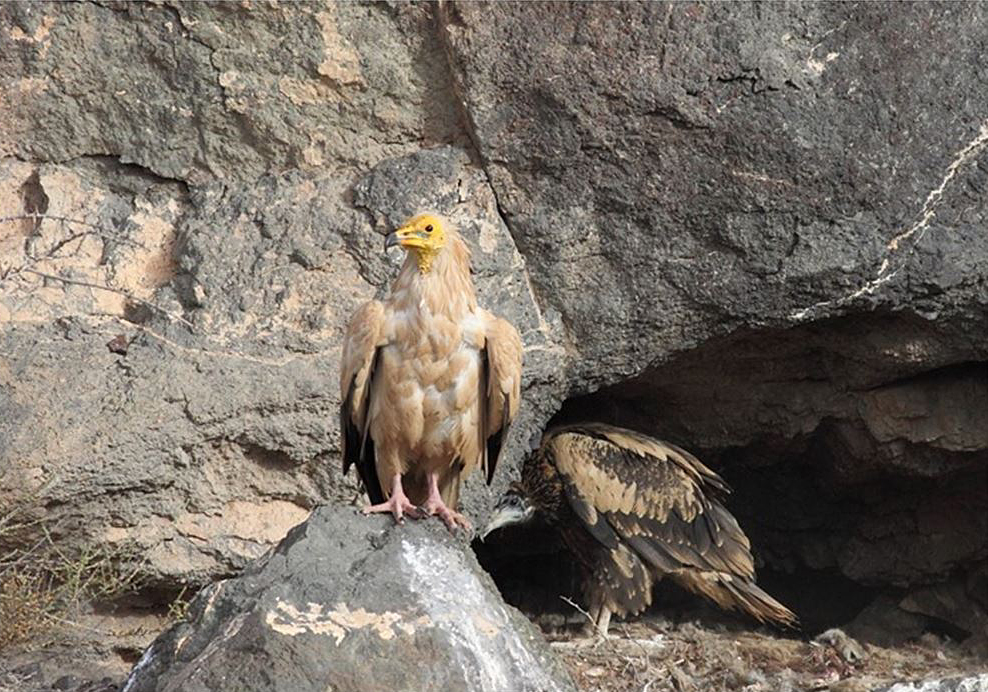One year after the launch of the LIFE Egyptian vulture project, the data collected with the population monitoring in 2018 by the Estación Biológica de Doñana-CSIC team confirm that the population of “guirre” of the Canary Islands continues to grow, keeping the positive trend observed in recent years.

The population seems to have grown by at least 38 individuals over the past year, a figure which translates into an increase of 12.20% over the previous year. The analysis of the results of the monitoring carried out from 1998 onwards reveals a continuous increase of the population, with the increase from 21 to 74 territories occupied during this period of time (+ 6% yearly), although the Island of Lanzarote presents a rate of growth much lower than that of Fuerteventura.
In 2018 the population appears to be composed of a minimum of 349 individuals, between breeding animals (153) and not (196), compared to 311 individuals surveyed in 2017. Moreover, in 2018 68 reproductive territories were identified in Fuerteventura and 6 in Lanzarote , for a total of 74 total territories for the Canaries that produced a total of 44 chicks (40 born in Fuerteventura and 4 in Lanzarote), 37 of which were ringed.
The punctual and complete monitoring of the population of the canary Egyptian vulture that has been carried out for more than twenty years is made possible thanks to the marking and identification of the majority of individuals through the use of metal rings and PVC rings. Currently about 90% of the entire population of “guirre” is ringed with rings of this type.
In addition, a number of individuals have been equipped with GPS-GSM devices, a factor that determines a basic improvement in the conditions and effectiveness of field work. In 2018, 43 individuals were equipped with GPS / GSM devices, 33 of which were bound to nesting territories. The information provided by the devices was used to determine the location of the nesting areas that might not have been detected otherwise, mainly because of areas that are difficult to access. In other cases, in the already known nesting areas, the information provided by the devices has allowed to reduce the time and effort dedicated to the search for the nests’ location. Similarly, the data of the equipment allow to define the patterns of land use by birds and the location of night-time aggregation areas.
The reduction of the non-natural mortality of the “guirre” population, especially as regards the deaths due to electrocution on power lines and illegal use of poison, together with the control of disturbances at the nesting sites, are the factors that are favoring the progressive recovery of the species in the eastern islands and that will be the subject of future actions of contrast in the LIFE Egyptian vulture project.

